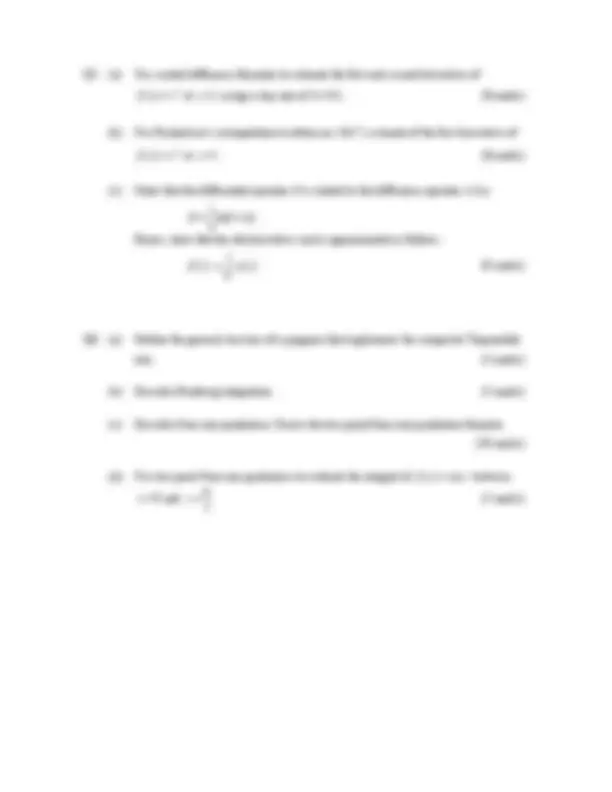



Study with the several resources on Docsity

Earn points by helping other students or get them with a premium plan


Prepare for your exams
Study with the several resources on Docsity

Earn points to download
Earn points by helping other students or get them with a premium plan
Community
Ask the community for help and clear up your study doubts
Discover the best universities in your country according to Docsity users
Free resources
Download our free guides on studying techniques, anxiety management strategies, and thesis advice from Docsity tutors
Main points of this past exam are: Fixed-Point Method, Multiple Roots, Gauss Seidel Method, Systems of Linear Equations, Rate of Convergence, Use of Over-Relaxation, Lagrange Interpolation, Cubic Spline Interpolation, Difference Polynomial
Typology: Exams
1 / 3

This page cannot be seen from the preview
Don't miss anything!


(NFQ Level 8)
Instructions Examiners: Dr. T. Creedon Answer any four questions. Mr. T. Corcoran All questions carry equal marks. Prof. P. O’Donoghue
Q1. (a) Describe any two of the following methods for obtaining roots of an equation: (i) Bisection (ii) False-Position (iii)Newton (8 marks) (b) Write a Fortran program for locating single roots using one of the methods in part (a). (7 marks) (c) Show that if g and g 'are continuous in an interval about the root and | g '( ) | x < 1 for all x in this interval and x 0 is chosen in this interval, then the Fixed-Point method will converge to the root. (7 marks) (d) Illustrate using a suitable example an equation with multiple roots. Describe the modified Newton’s method for obtaining multiple roots. (3 marks)
Q2. (a) Describe the Gauss Seidel method for solving a system of linear equations. (9 marks) (b) Outline the general structure of a program for solving systems of linear equations using the Gauss Seidel method. (8 marks) (c) Describe the use of over-relaxation to improve the rate of convergence of the Gauss Seidel method. (8 marks)
Q3. (a) Describe Lagrange interpolation referring to a general formula for Pn ( x ). (6 marks)
(b) Given the data
Calculate f (3.0) using a Lagrange interpolating polynomial of degree 3. (6 marks) (c) Outline the general structure of a program for implementing Lagrange interpolation. (7 marks)
(d) Describe cubic spline interpolation. (6 marks)
Q4. (a) State the formula for Newton’s interpolating polynomial Pn ( x )of degree n.
Derive this formula for the case (^) n = 2. (8 marks) (b) Given the data in the table below, approximate f (3)using a 3 rd^ degree divided difference polynomial. Estimate the error in your approximation.
x f ( ) x 3.2 22. 2.7 17. 1.0 14. 4.8 38. 5.6 51. (9 marks) (c) Outline the general structure of a program to implement Newton’s interpolating polynomial. (8 marks)
x 3.2 2.7 1.0 4. f ( x ) 22.0 17.8 14.2 38.